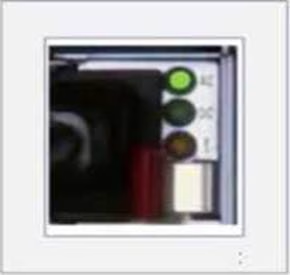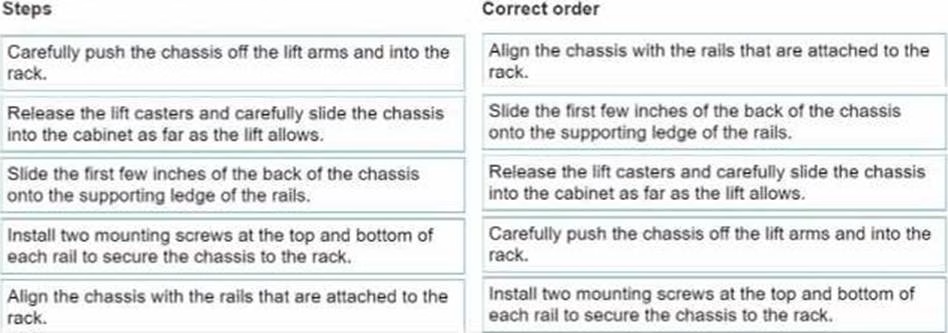DELL EMC D-PSC-MN-01 Dell PowerScale Maintenance Online Training
DELL EMC D-PSC-MN-01 Online Training
The questions for D-PSC-MN-01 were last updated at Dec 17,2025.
- Exam Code: D-PSC-MN-01
- Exam Name: Dell PowerScale Maintenance
- Certification Provider: DELL EMC
- Latest update: Dec 17,2025
Which port slot provides management functionality on a PowerScale F600?
- A . PCle slot 3
- B . PCle slot 1
- C . rNDCstot
- D . PCle slot 2
DRAG DROP
What Is the correct order of steps to Install a PowerScale Gen6 in a rack?

Exhibit.

A platform engineer has connected power cables to a Dell PowerScale Gen6 node.
What does the status indicator indicate?
- A . Not functioning
- B . Cold and redundant
- C . Mismatch of voltage or component firmware
- D . On and healthy
A platform engineer does not have a Flash drive available.
How can they reimage a Dell PowerScale node?
- A . Copy the OneFS install file to the node and run the isi_reimage command.
- B . Copy the OneFS install file onto CD and install from CD.
- C . Use a serial connection to run the installation from a laptop.
- D . Copy the OneFS install file to the node and run the isi diskutil command.
What type of drive should a customer use to ensure that their data is encrypted?
- A . NVMe
- B . SSD
- C . SED
- D . Hard drive
What can be viewed using the isi_upgrade_logs _s command?
- A . Post upgrade errors
- B . Current upgrade state
- C . Active upgrade errors
- D . Upgrade assessment results
What is an important consideration when connecting Dell PowerScale Gen6 nodes to external power?
- A . Cable each node in a node pair to a different PDU.
- B . Cable all nodes to the external power feeds before connecting switch power cables.
- C . The total power load for all nodes in the rack should not exceed 100% of the branch circuit rating.
- D . Connect both cables of each node to different external power feeds.
Which three F200 components can a customer replace?
- A . System Battery
- B . Network Interface Card
- C . CPU module
- D . DIMM
- E . NVDIMM Battery
A customer is planning to expand a Dell PowerScale Gen5 cluster with H500 nodes What is a consideration?
- A . A minimum of three H500 chassis are needed.
- B . All new nodes must be on the network.
- C . A minimum of four H500 nodes are needed.
- D . A minimum of one H500 chassis is needed.
An engineer wants to create a 4-node cluster after rack and stack.
What port must they use to start the installation?
- A . COM
- B . FE
- C . BE
- D . iDRAC
Latest D-PSC-MN-01 Dumps Valid Version with 139 Q&As
Latest And Valid Q&A | Instant Download | Once Fail, Full Refund


